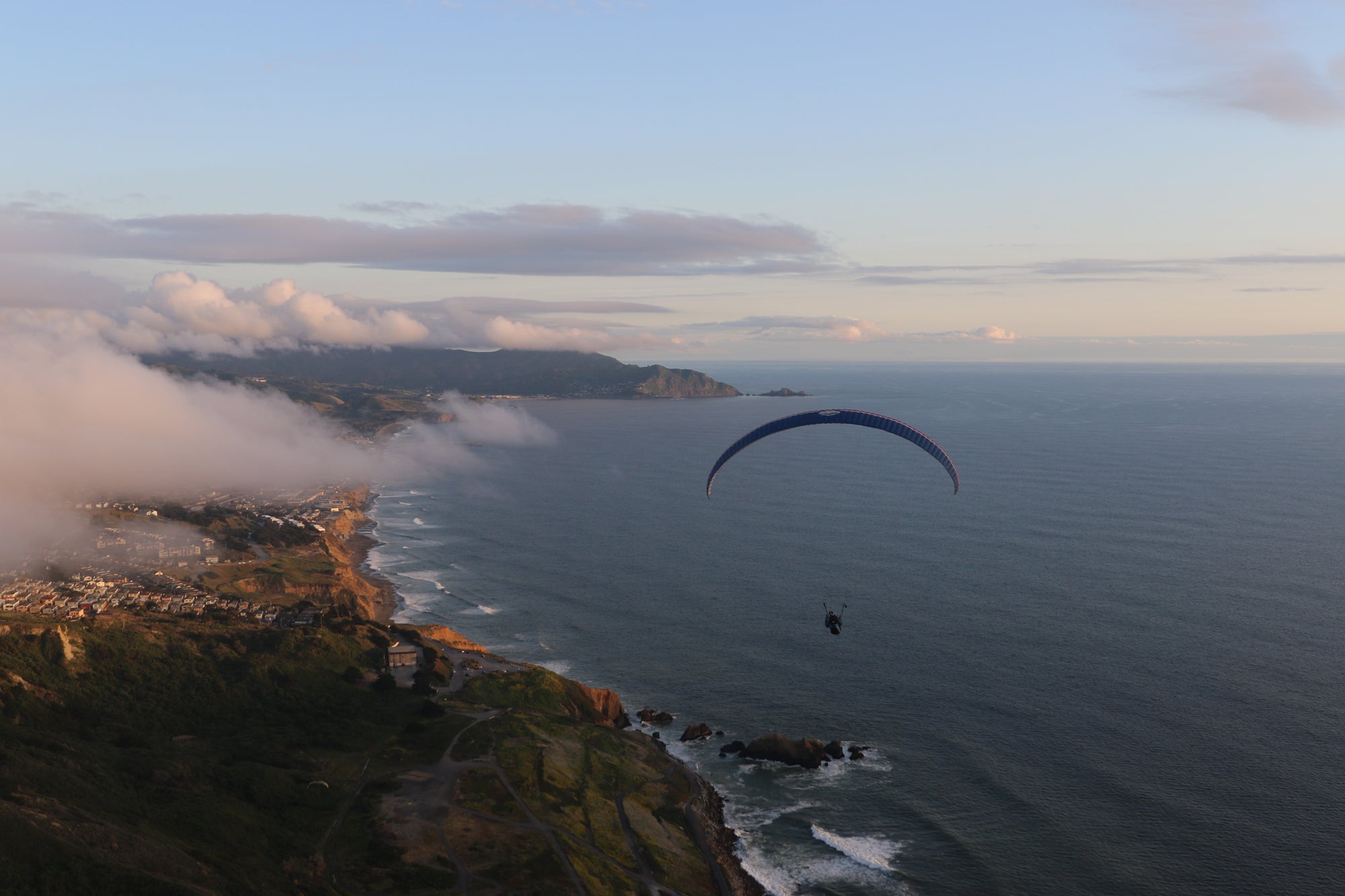Paragliding and hang gliding are two distinct forms of unpowered flight, each with its own characteristics and equipment. While both sports involve unpowered flight there are notable differences between paragliding and hang gliding in terms of equipment, flight characteristics, and pilot positioning.
Equipment:
Paragliding: Paragliders consist of a canopy made of lightweight fabric and lines that attach the pilot to the wing. The wing has an inflatable structure created by air pressure and does not require a rigid frame. Paragliders are portable and can be folded into a backpack for easy transportation.
Hang Gliding: Hang gliders are built around a rigid frame made of aluminum or composite materials, forming a triangular wing shape. The pilot is suspended in a harness beneath the wing, controlling the glider through weight shifts and hand controls. Hang gliders are generally larger and less portable compared to paragliders.
Flight Characteristics:
Paragliding: Paragliders are known for their slow and gentle flight characteristics. They are capable of soaring and staying aloft in favorable conditions, but their glide ratio (the horizontal distance traveled compared to the vertical descent) is generally lower than that of hang gliders. Paragliders are more responsive to thermals and can perform tight turns and maneuvers with ease.
Hang Gliding: Hang gliders are designed for faster and more efficient gliding performance. With their rigid wings and streamlined shape, hang gliders have a higher glide ratio, allowing them to cover longer distances and achieve higher speeds. Hang gliders are less maneuverable than paragliders but offer stability and the potential for longer flights.
Pilot Positioning:
Paragliding: In paragliding, the pilot is seated in a comfortable harness suspended below the wing. The pilot's legs are extended in front, and they have a panoramic view of the surroundings. The seating position allows for a more relaxed and recreational flying experience.
Hang Gliding: Hang gliding involves a prone position, with the pilot lying horizontal in a harness attached to the frame of the wing. The pilot's body is parallel to the ground, and their feet are positioned in a control bar. The prone position offers a more aerodynamic shape and enables the pilot to optimize weight shifting for control.
While both paragliding and hang gliding involve unpowered flight using wing-like apparatus, they differ in terms of equipment, flight characteristics, and pilot positioning. Paragliding offers a more portable and accessible experience, a more comfortable seated position and increased maneuverability, which why most people have switched to paragliding.
